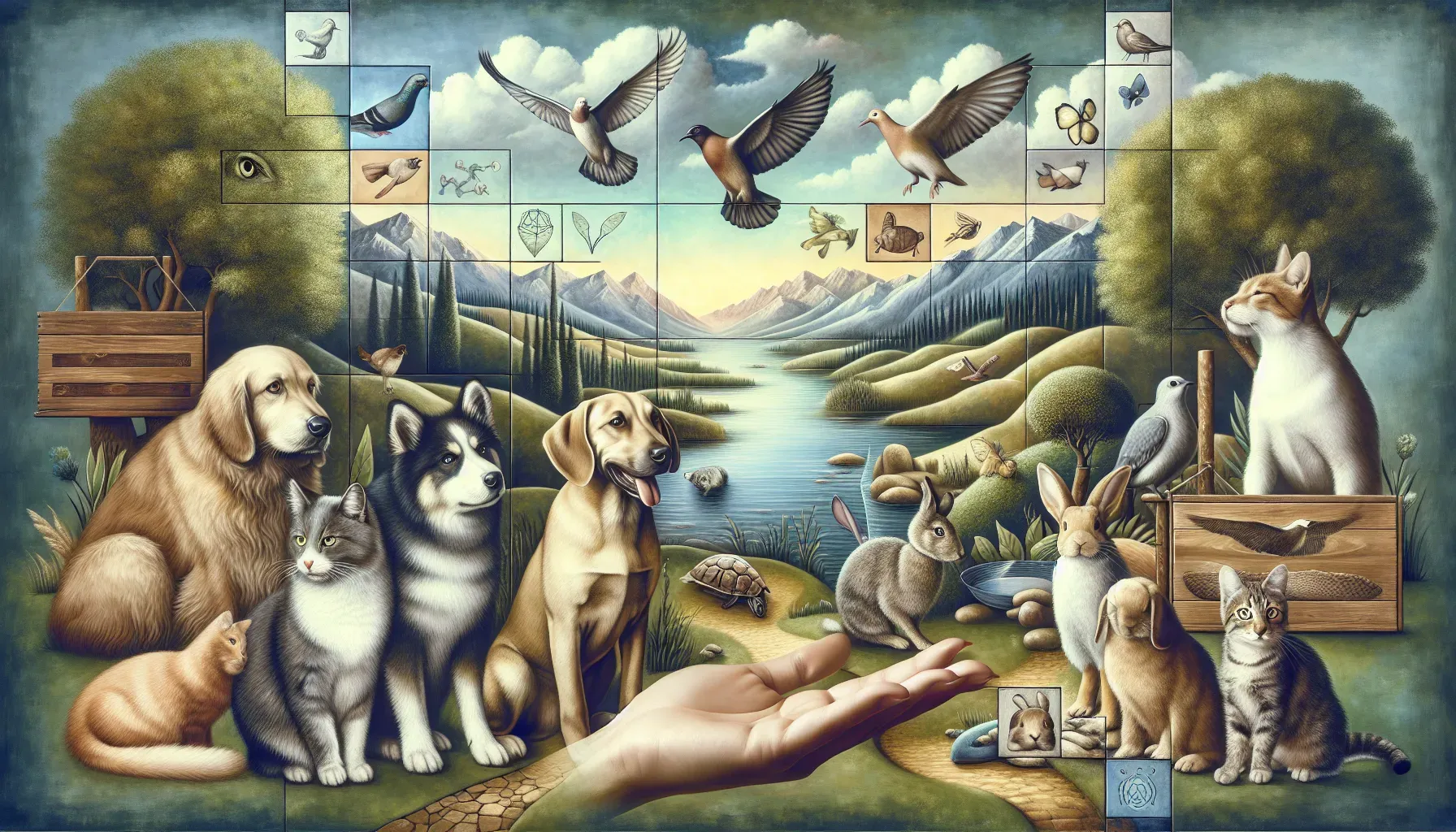Simplified Communication: Understanding Your Pet's Unique Language and Signals

Decoding Nonverbal Cues with Ease and Clarity
Understanding your pet's nonverbal cues is fundamental for building a strong and healthy relationship with them. Whether you're a seasoned pet owner or a newbie, deciphering your pet’s body language and vocalizations can be an enriching experience. Here are some key nonverbal cues and signals to watch out for:
Body Language
Pets often express their emotions through body language. For instance, a dog wagging its tail typically indicates happiness and excitement, while a tucked tail could signify fear or anxiety. Similarly, a cat's arched back may signal aggression or feeling threatened. Learning to interpret these visual signals enables you to respond appropriately, thereby strengthening the bond between you and your pet.
Related Article: Nurturing the Bond: Deepening Your Connection with Your Pets
Facial Expressions
Just like humans, pets display emotions through their facial expressions. A relaxed and slightly open mouth in dogs can indicate contentment, whereas narrowed eyes may imply discomfort or unease. Cats can demonstrate happiness through slow blinking, while flattened ears can suggest fear or displeasure. By paying attention to these subtle cues, you can better understand your pet's emotional state.
Establishing Trust Through Clear Interpretation of Pet Behavior
Building trust with your pet begins with clear interpretation of their behavior. It's essential to observe and comprehend their actions within various contexts to establish a deep level of trust and understanding. Here are some techniques to help interpret your pet’s behavior effectively:
Consistency in Routine
Pets thrive on routine; they find comfort and security in predictability. By maintaining consistent feeding schedules, exercise routines, and playtime, you create a stable environment that fosters trust and reliability. Over time, this consistency will lead to a stronger bond between you and your pet.
Positive Reinforcement
Using positive reinforcement techniques such as treats, praise, and affection to reinforce good behavior can significantly enhance trust in your relationship with your pet. When your pet associates certain actions with positive outcomes, they are more likely to exhibit desirable behaviors.
Related Article: Navigating Separation Anxiety in Dogs: Creating Comfort and Coping Strategies for Your Canine Companion
Acknowledging Stress Signals
Understanding your pet's stress signals is crucial for building trust. Signs of stress in pets may include pacing, excessive panting, hiding, or aggression. Recognizing these signals allows you to address the underlying causes of stress and provide support when needed, thus strengthening the bond of trust.
Strengthening the Human-Animal Bond via Simplicity in Communication
Effective communication forms the cornerstone of the human-animal bond. By simplifying communication with your pet, you can foster a deep connection built on understanding and empathy.
Related Article: Silencing the Symphony: Solutions for Navigating Nocturnal Pet Vocalizations and Disturbances
Active Listening
Cultivating active listening skills is paramount in understanding your pet's needs and emotions. Whether it's through observing their body language or responding to vocal cues, active listening demonstrates respect for your pet's communication efforts and promotes a harmonious relationship.
Nonverbal Affirmations
Nonverbal affirmations such as gentle petting, comforting touches, and maintaining eye contact convey reassurance and care to your pet. They serve as powerful gestures that bridge the communication gap between humans and animals, promoting trust and strengthening the bond.
Consistent Verbal Cues
Utilizing consistent verbal cues paired with positive reinforcement aids in streamlining communication with your pet. Whether teaching commands or offering encouragement, clear and consistent verbal communication facilitates mutual understanding between you and your furry companion.
Learning to Listen: Practical Tips for Understanding Your Pet's Vocalizations and Body Language
Understanding your pet’s vocalizations requires attentive listening and observation. Each bark, meow, or chirp holds significance, reflecting your pet’s emotions or needs. Here are practical tips for deciphering your pet’s vocalizations and body language:
Engage in Interactive Play
Engaging in interactive play sessions allows you to observe your pet’s vocalizations and body language in different contexts. Pay attention to variations in their sounds and movements during play, as it provides valuable insights into their communication style.
Seek Professional Guidance
Consulting with professional trainers or animal behaviorists can offer invaluable expertise in interpreting your pet's vocalizations and body language. These specialists can provide personalized insights tailored to your pet's specific behaviors, enhancing your ability to understand their unique language.
Patience and Empathy
Practicing patience and empathy is vital when learning to understand your pet's vocalizations and body language. Taking the time to listen, observe, and respond empathetically strengthens the bond between you and your pet while deepening your understanding of their communication style.
By honing your ability to interpret both nonverbal cues and vocalizations, you can forge a deeper connection with your pet, enriching the quality of care you provide while nurturing a greater sense of companionship.
In conclusion
Mastering the art of simplified communication with pets is an ongoing journey that not only enhances the well-being of our animal companions but also enriches our own lives by fostering harmonious relationships filled with love, understanding, and mutual respect—the essence of the human-animal bond.






